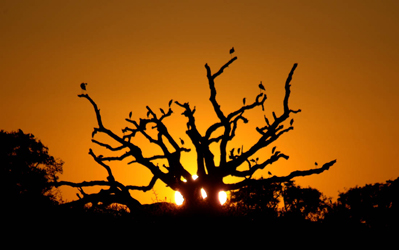Conservation bias towards flagship species sometimes threatens other species of chief concern. Long-term studies of potential harm by favoured species on other sensitive species, though seldom adopted, are required to fairly evaluate the suitability of management and restoration efforts. The potential detrimental outcomes of conservation biased towards birds is illustrated by investigating the long-term (1963–2009) impact of a large waterbird colony on a remnant cork oak Quercus suber population at a World Biosphere Reserve in south-western Spain (the Doñana National Park). To this end, changes in performance (growth, crown vigour and survival) of oaks occupied and unoccupied by the waterbird colony were compared. After 46 years of occupation, the risk of death to centenarian oaks in the area occupied by the colony was over twofold higher than for trees outside the area. Non-centenarian planted and naturally regenerated oaks showed similar trends, leading to restoration failure. This long-term study reveals that waterbirds and centenarian oaks cannot coexist, at the most local scale, but they can at a regional scale including within the Doñana area. Immediate planting efforts in suitable colony-free areas are proposed, while managers evaluate the feasibility of relocating colonial waterbirds to an alternative location. To preserve the Doñana oak genetic pool, such reforestation should be accomplished using local seeds and seedlings. New trees should not be planted in close proximity of colony-occupied trees since it significantly reduces their survival. Doñana stakeholders should both overcome current conservation bias in favour of birds and enter into a process of settlement to best preserve the overall biodiversity of the system. informacion[at]ebd.csic.es: Fedriani et al (2016) Long-term impact of protected colonial birds on a jeopardized cork oak population: conservation bias leads to restoration failure. J Appl Ecol. doi:10.1111/1365-2664.12672


 Las altas temperaturas están provocando que las lagunas y las marismas de Doñana pierdan agua rápidamente
Las altas temperaturas están provocando que las lagunas y las marismas de Doñana pierdan agua rápidamente




